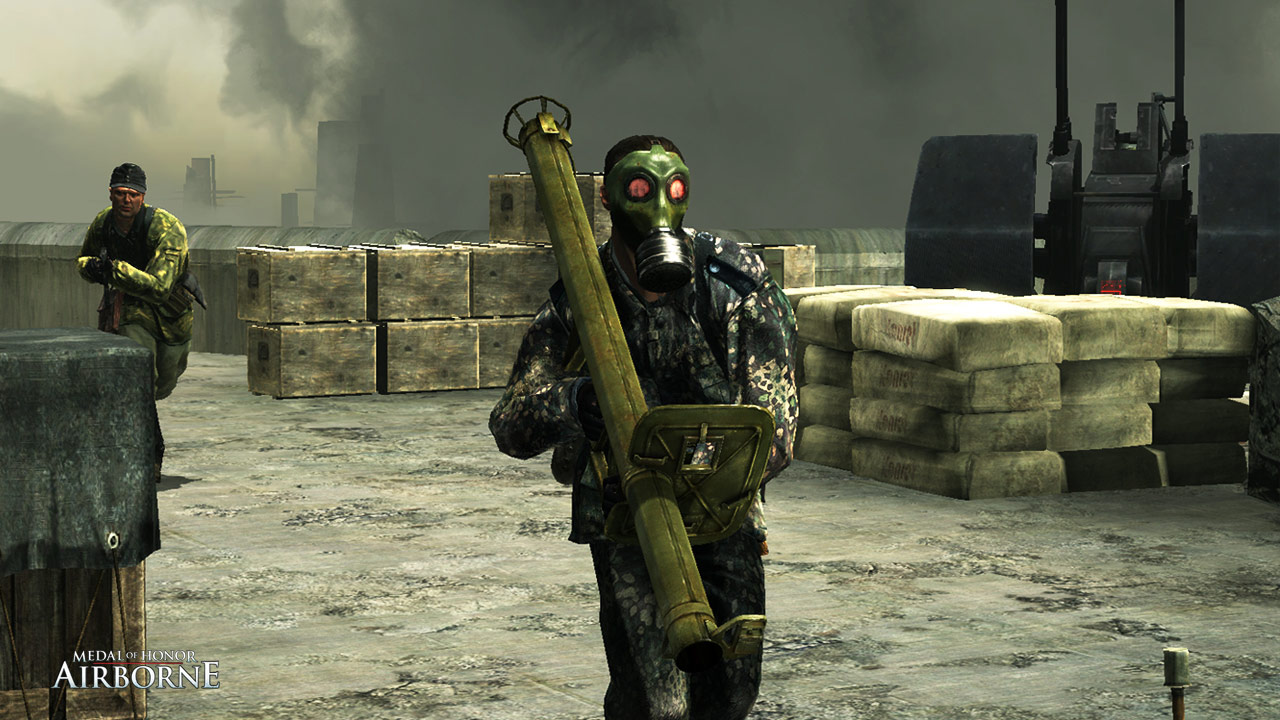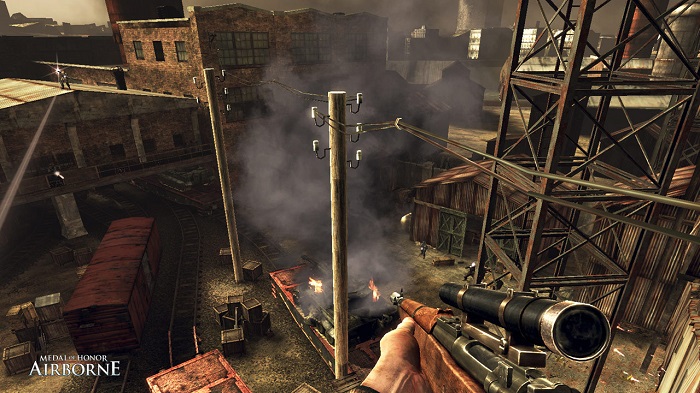

One example of that would be Operation Market Garden. The advantage of the levels is that EA put a great level of realistic detail into the game, especially in the levels where towns have been shelled. In one situation, the plane gets hit, and the engines explode in a chaos of flame. You experience some intense moments even while flying.

All crucial aspects from the mission briefings to the menu system have been given attention. The presentation values in Medal of Honor: Airborne are outstanding. infantry combat becomes old after a while, and it would not have hurt to have more enemy variety. Some levels are more open than others, but the enemies get increasingly difficult. For some of the level's objectives, you'll be forced to take a linear path, and while this might not be a bad thing due to the action, it can make the parachuting aspect feel more like a gimmick. However, some of this new freedom is an illusion. This game gives you choices on how you want to attack a problem. One of the common strategies is to land on high ground to view the action and shoot at enemies before leaping into the fight. In the game, a compass shows you the destination of each objective making it easy to find your goals. Starting in a new fighting spot keeps the game from getting old, and you don't have to start in a difficult location if the past position was a death wish. While floating through the air, you can steer the parachute to whatever location you desire.

Instead of setting players up with linear levels, EA lets you choose where to start each mission by throwing you out of a plane.

Unlike Medal of Honor games before, this installment takes a different approach. The game's historical background teaches you while playing. Medal of Honor: Airborne places you right into some of World War II's most heated battles.


 0 kommentar(er)
0 kommentar(er)
